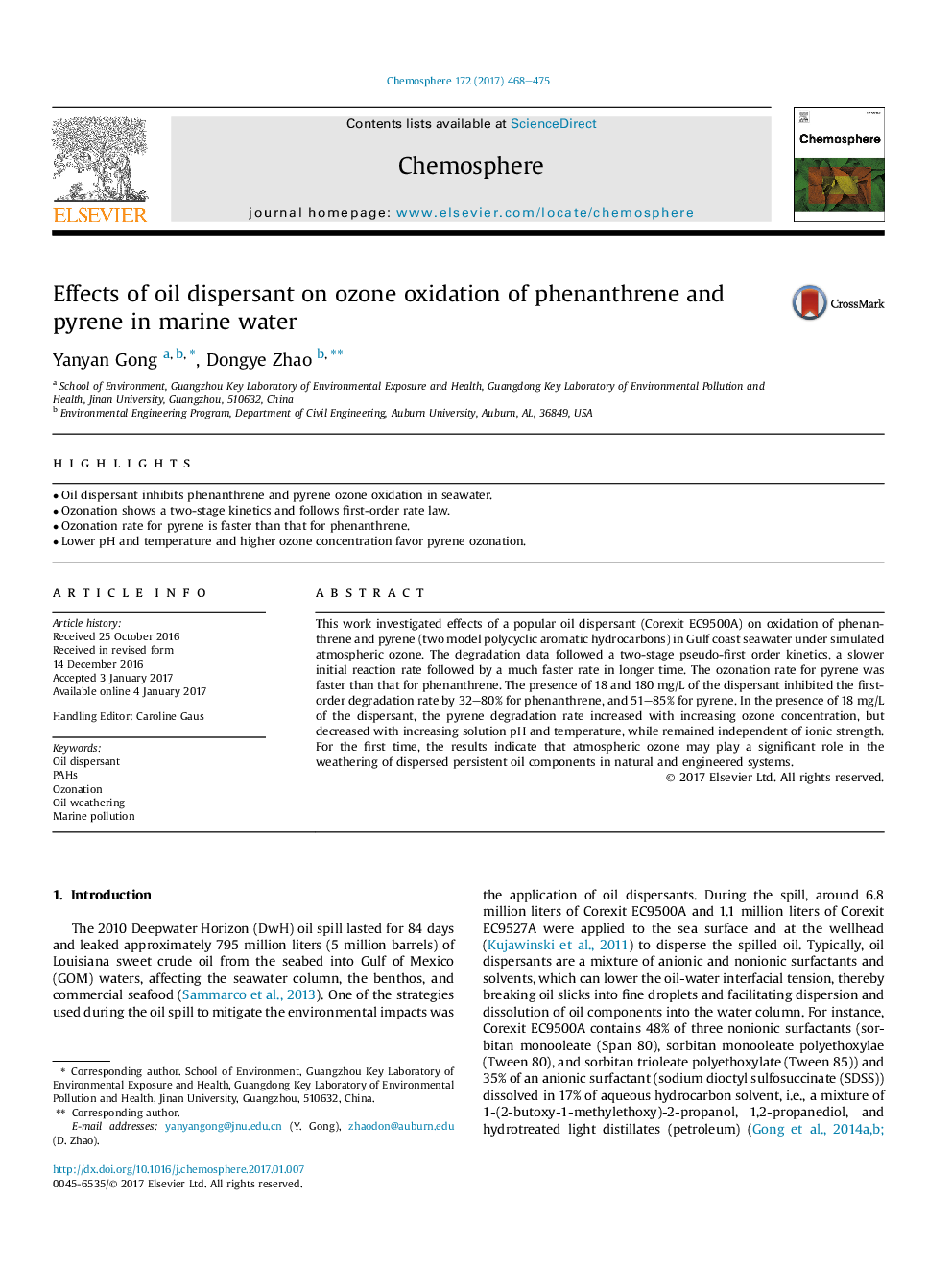| Article ID | Journal | Published Year | Pages | File Type |
|---|---|---|---|---|
| 5747072 | Chemosphere | 2017 | 8 Pages |
â¢Oil dispersant inhibits phenanthrene and pyrene ozone oxidation in seawater.â¢Ozonation shows a two-stage kinetics and follows first-order rate law.â¢Ozonation rate for pyrene is faster than that for phenanthrene.â¢Lower pH and temperature and higher ozone concentration favor pyrene ozonation.
This work investigated effects of a popular oil dispersant (Corexit EC9500A) on oxidation of phenanthrene and pyrene (two model polycyclic aromatic hydrocarbons) in Gulf coast seawater under simulated atmospheric ozone. The degradation data followed a two-stage pseudo-first order kinetics, a slower initial reaction rate followed by a much faster rate in longer time. The ozonation rate for pyrene was faster than that for phenanthrene. The presence of 18 and 180Â mg/L of the dispersant inhibited the first-order degradation rate by 32-80% for phenanthrene, and 51-85% for pyrene. In the presence of 18Â mg/L of the dispersant, the pyrene degradation rate increased with increasing ozone concentration, but decreased with increasing solution pH and temperature, while remained independent of ionic strength. For the first time, the results indicate that atmospheric ozone may play a significant role in the weathering of dispersed persistent oil components in natural and engineered systems.
